CCNY Marks 50 Years Since Five Demands Protest
Words, photographs, and videos by Kia Thomas
Featured image courtesy of the CCNY Archives in Cohen Library - photo by Nancy Shia
Fifty years ago, onApril 22, 1969, the Black and Puerto Rican Student Community of City Collegeconvened in the wee hours of the morning to lock the gates of the South Campus,shutting out students, faculty, and staff with the purpose of eradicatingracial disparity at CCNY. The students took over 17 CCNY buildings andeffectively shut down the school for two weeks, refusing to relent without therecognition of five demands:
1. A SCHOOL OF BLACK AND PUERTO RICAN STUDIES
2. A FRESHMAN ORIENTATION FOR BLACK AND PUERTO RICAN STUDENTS
3. THAT THE SEEK STUDENTS HAVE A DETERMINING VOICE IN THE SETTING OF GUIDELINES FOR THE SEEK PROGRAM, INCLUDING THE HIRING AND FIRING OF SEEK PERSONNEL
4. THAT THE ACTUAL COMPOSITION OF THE ENTERING FRESHMAN CLASS BE RACIALLY REFLECTIVE OF THE NYC HIGH SCHOOL POPULATION
5. THAT ALL EDUCATION MAJORS BE REQUIRED TO TAKE BLACK AND PUERTO RICAN HISTORY AND THE SPANISH LANGUAGE
The Black Studiesprogram, in conjunction with the Alumni Association, the Black and Puerto RicanStudent Community (BPRSC) Association, and the President’s Office organized the“50th Anniversary Celebration of the 1969 Takeover of City College”, which tookplace from April 16 to the 18. The three-day celebration followed the theme“Remembering Our Past, Continuing Our Legacy.”
April 16: Panel Discussion
The first event was called “The Birth of Area Studies,” a panel discussion between Chris Henry, a CCNY USG Senator for the College of Liberal Arts and senior, Nancy Cardwell, an assistant professor in CCNY’s Early Childhood Education program, Asha Samad, a CCNY Anthropology lecturer associated with the Black Studies program, Center for Worker Education department chair and associate professor Kathlene McDonald, Sarah Muir, chair of the CCNY International Studies Program and Vicki Garavuso, Early Childhood Education director at CWE.
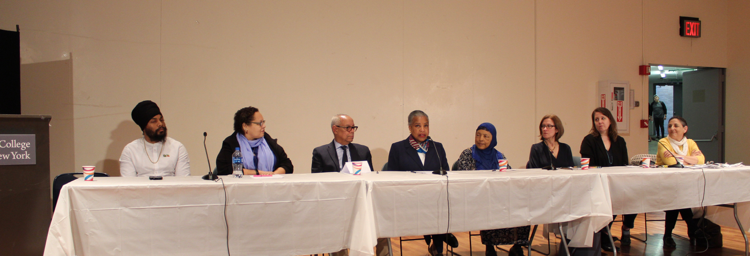
Featured on the panelwere two members of the original Committee of Ten and the BPRSC, Charles Powelland Francee Covington.
Dr. Vanessa Valdez,the Black Studies program director at CCNY, moderated the panel.
Almost every panelisthad been CUNY students during the 1969 protests. Powell and Covington spoke ofthe SEEK program in high regard, calling it a “safe haven” for the black andbrown students who were admitted to the predominantly white City Collegethrough the program. Their foundational experiences and valuable academicexchanges with the faculty and staff at SEEK inspired them to demand black andPuerto Rican studies. Covington said that their experiences at SEEK alsoinspired them to demand freshman orientation for students of color.
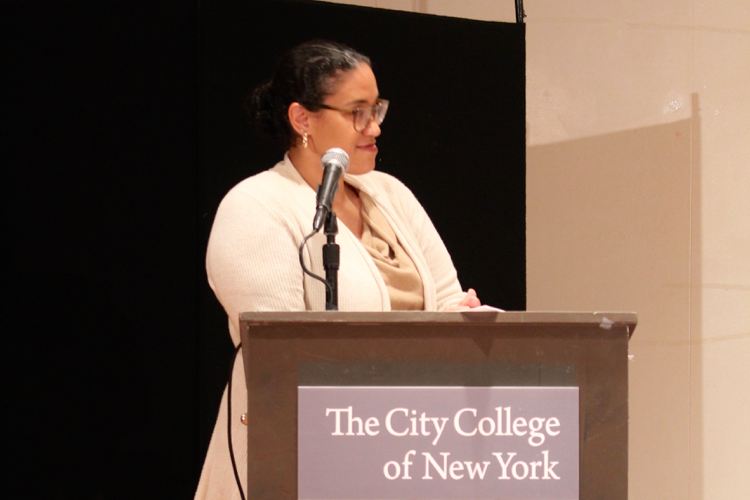
Powell and Cardwellboth commented on the politically charged atmosphere of 1969. The Civil RightsMovement in the US was technically over, yet injustice remained and only seemedto intensify. The year before, Martin Luther King Jr. was assassinated and inresponse black and brown neighborhoods were rioting.
Powell, who was bornin New York, returned from Lincoln University after the assassination to“Harlem on fire.” Having joined the Black Panthers in Philadelphia, Powell wasalready familiar with the reality of racism and mobilizing for social justicewhen he became a student at City College. In fact, The Panthers mandated hisinvolvement with the 1969 Takeover.
In this heightenedera, many experienced a consciousness shift that allowed them to see the grossinjustices they were facing. Along with the 1969 protests, resistance was beingseen across the globe. Cardwell, whose mother was a CCNY black studies major,recalled her childhood being defined by these events and the coverage ontelevision about the movement along with the representation of black people inthe media becoming “very personal.”
Samad, who attendedHunter College and lived in Harlem during the protests, commented on the starkwhiteness of not only CCNY, but CUNY. She went to school with her husbandshortly after Hunter College opened its doors to women. Though she was notdirectly involved with the protests, she recalled the community providing foodand laundry for the students occupying the buildings. She also recalled CityCollege’s efforts to create divisions in the student body of color; she saidthey first threatened to expel the students and everyone involved, then laterseparated urban studies and designated majors by ethnicity.
April 17: The Commencement Ceremony
The commencement ceremony took place on April 17 in the NAC Ballroom. The room was filled wall to wall with City College alumni, including some of the original members of the Committee of Ten, their families and old peers. Current students, faculty, and staff mingled with each other.

The ceremony was thekeynote of the series of events. Attendees danced to oldies and mingled beforethe speakers began, evoking palpable energy throughout the room. At one point,some alumni got into a circle and began to sing "Power to the People,”chanting “Black power for black people, Puerto Rican power for Puerto Ricanpeople”.
The ceremony beganwith a call to order and drumming by The Nubian Messengers, followed by aninvocation by Reverend Afiya Diane Dawson. A tribute to the ancestors was heldand included a libation ceremony by James Small, a CCNY alumni and former blackstudies professor, a reading of the poem “Tom and Judy” written by Louis ReyesRivera and a memorial video presentation created by former Bronx CommunityCollege professor Khadija DeLocache.
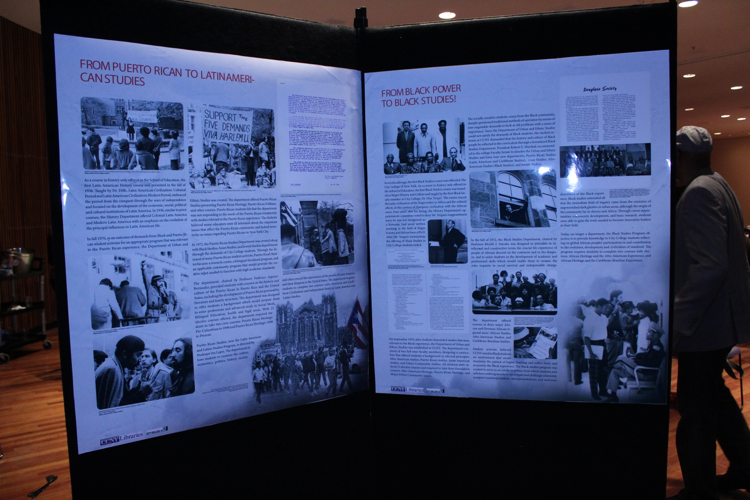
Several New York Citypublic office representatives standing in for people such as Mayor BillDeBlasio, Public Advocate Jumaane Williams, Community Board 10 (where CharlesPowell is the Vice Chair), and Manhattan Borough President Gale Brewerofficially recognized April 22, 2019 as “City College Takeover Day,” “The 50thAnniversary of the 1969 Takeover,” and “Black and Puerto Rican StudentAppreciation Day.”
The representatives bestowed honor to those who participated in the protests and acknowledged the alumni as trailblazers who “courageously defended and fought for social and educational justice.”

Ron McGuire, a whitestudent who was expelled for his participation in the 1969 protests and now apro bono lawyer for CUNY students bringing cases against the University, spokeon his role as a participant and his experiences as a City College student.
McGuire and a group ofwhite students occupied Klapper Hall, which then housed the School ofEducation, in solidarity with the Black and Puerto Rican student protestors.Since he had already been placed on academic probation, he was expelled for hisparticipation. McGuire recalled telling the hearing board, “If you expel me forthis, you’re saying that I am in some way responsible for the events that tookplace here. There is no greater compliment you can give me.”
He brought attentionto the “counterrevolutions” by CUNY in response to not only the 1969 protests,but to University and nationwide protests, such as the demotion of BlackStudies from a department to a program, sweeping faculty and staff firings, theclosing of an “Afrocentric” daycare housed in Aaron Davis Hall, and theeventual end of open admissions at CUNY. McGuire hoped the losses would be a“wake-up call to the youngbloods.”
Powell and Covingtonreturned for the second day. Alongside them was Tom Soto, a lifelong politicalactivist and member of the Committee of Ten. Soto was visibly moved and becameemotional before he began to speak, paying his respects to revolutionaries suchas Nat Turner and Toussaint L’Overture.
Powell reminded theaudience of the power of the SEEK program, emphasizing its role as a sanctuaryfor students of color. Coming from public schools that did not believe they hadthe capacity to learn to a college where it was clear they were unwanted, SEEKprovided a place for Powell and his peers to be heard, seen and acknowledged.“There is nothing worse than not being seen,” he said.
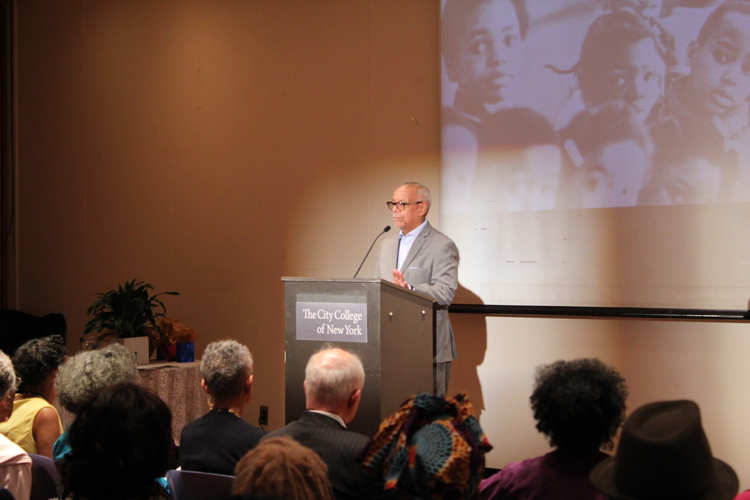
Powell shouted outseveral members of the SEEK faculty and staff, including Allen Ballard, thefounding director of the SEEK program.
Covington spoke of theactivist roots that lead her to participate in the 1969 Takeover and her“continuum” of fighting for marginalized people.
Arrested at 14 yearsold for protesting at Downstate Medical Center in Brooklyn, Covington was ableto grasp the deep-seated inequities people and children of color faced in theUnited States, especially within the school system. Covington remarked, “We[SEEK students] were thought to be people who didn’t get into city college thenormal way because we had some deficiencies. We were graduates of the New YorkCity public school system. We did not leave our homes deficient.”
Powell acknowledgedthat the work the Committee of Ten did set in motion a series of events,protests and negotiations that led to the instatement of open admissions. Afterthe success of the 1969 protests, he said he and some of the Committee became“takeover specialists,” using similar methods to tackle other social injusticeswithin the community of Harlem.
Powell and Covingtonboth recalled being in the Committee of Ten as grueling, filled with “many sleeplessnights and many meetings.”
The politicalatmosphere of 1969 was incredibly dangerous. Black and brown activists weremurdered then framed as criminals or junkies and discredited. This was a methodof disrupting the Black Power movement. Many members of the Committee of Tenwere under surveillance for years after their participation with the Takeover.Covington told her friends, “If I’m found dead in an alley with a syringe in myarm, you know I was murdered.”
Despite this, thestudents stayed motivated because they were able to depend on the support ofone another. They delegated roles among themselves, from standing at the frontlines to prevent angry students from coming over the walls to “squashing anyrumors” about the Takeover. Each of them assumed responsibility to make suretheir movement had legs to stand on. At the end of the day, they knew they hadno other choice but to fight. Covington said, “The reason we were successful isbecause we did our part by pushing [and] pulling...in 1969 we did our part inkicking down the doors of racism that lead to open admissions.”
Covington gave asuggestion to older revolutionaries who may have less energy than the used to. “Idon’t have to be on the front lines, I can write a check. I don’t have to be onthe front lines, I can make phone calls. I can support a young person who istrying to make a change.” She said.
Felipe Luciano, afounding member of the New York Chapter of the Young Lords and The Last Poets,spoke on behalf of Henry Arce, a member of the Committee of Ten andpresident/co-founder of Puerto Ricans Involved Student Action.
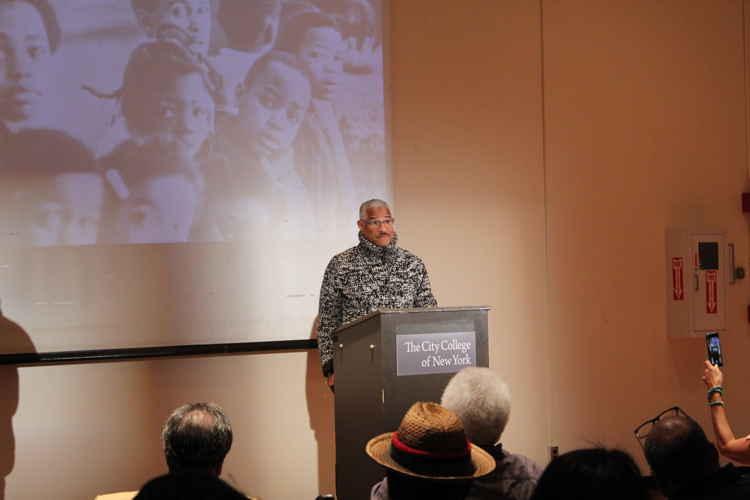
Luciano focused on thestrides the committee made compared with where CUNY is today, concerned by the“lack of urgency” and “weakened spirit of the new generation.” He encouragedyoung changemakers to take advice from their elders and open themselves toguidance, saying that young people need a framework for how to resisteffectively while staying alive. Reminding the audience of the devastatingeffects of COINTELPRO and other federally-funded attempts to create divisionswithin communities of color, Luciano urged students to consider “there was,there is, a plan to kill you.”
“Public schools arethe next revolutionary vanguard movement,” said Luciano. With NYC having themost segregated public school system in the United States and recent uproarabout the demographics in New York City’s specialized high schools, he urgedthe audience to protect invisible communities.
“We need to extend thecoalition to more people of color,” he said, recognizing that Black and PuertoRican communities are only a few amongst many who struggle under unjustsystems.
Dr. Valdez returned asa speaker for the ceremony. She spoke of her Ivy League experience in highereducation and how it contrasted with her own Latinx upbringing. She earned herbachelor's degree from Yale University, where she was an English major and herdoctorate from Vanderbilt University, where she majored in Portuguese andSpanish.
In these spaces, sheobserved a disturbing “disregard for each other” amongst her well-off, whitepeers. Valdez described their attitudes as “inhumane” and completely departedfrom how she had been taught to treat others as a young Latina woman.
At Vanderbilt, Valdez was introduced to Afrolatinx literature for the first time. This, she said, opened her eyes to the erasure that Afrolatinx people have faced throughout the modern history of the Americas.
She contributed ourcompulsion to make differences between Hispanic and black identity to a legacyof Western antiblackness, racism, and subjugation. “There is no contradictionbetween Black and Latinx.” Valdez asserted. Her studies inspired her to focuson “combatting the erasure of black Latin Americans.
Valdez wrote DiasporicBlackness: The Life and Times of Arturo Alfonso Schomburg, placing one ofthe most famous Black collectors and archivists of our generation squarely inthe middle of his Latinx heritage without compromising his Blackness.
As the Black Studiesprogram director, Valdez implored the audience to “hold her accountable” forprotecting and expanding Black Studies at CCNY. One of her goals is to makeBlack Studies an academic department again.
Jeanette Adams, a CCNYalumni and former SEEK tutorial coordinator, recited an original poem she wroteas a CCNY student after the assassination of Martin Luther King.
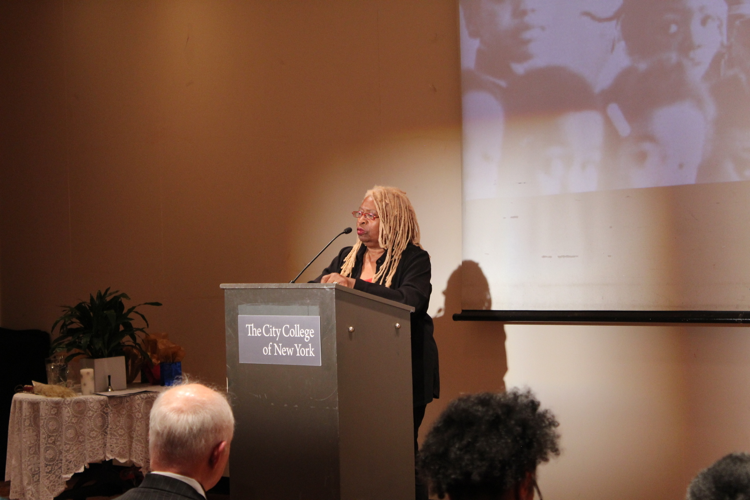
Lumumba Akinwole-Bandele,director of Community Organizing NAACP Legal Defense and Educational Fund, aCCNY alumni and a former CUNY lecturer, came into the world a while after the1969 Takeover, yet was deeply impacted by the work of the Committee of Ten.
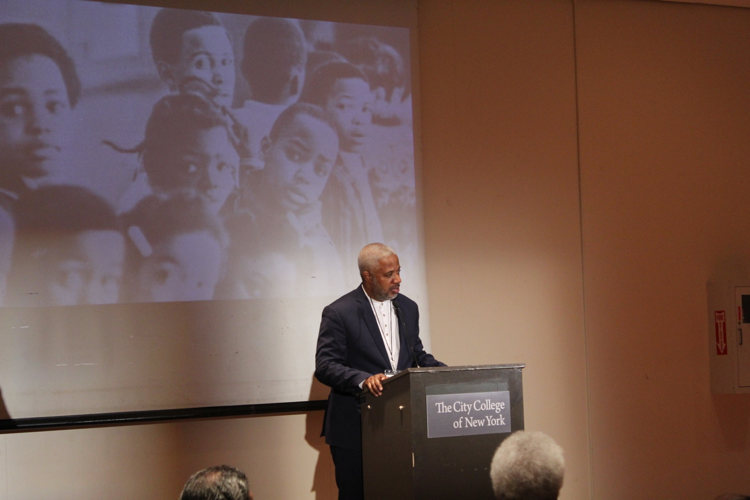
Bandele said he beenborn into the Black Liberation movement, taking part in political action froman early age. He pointed to a lack of black history education in publicschools, both now and then. Bandele said that, in fact, “the education systemis almost the same for black and brown students as it was in 1969.”
Bandele stood indirect opposition to fellow speaker Luciano. He countered his generation’sclaims that the youth are “lazy and detached,” using the comprehensive,well-organized and youth-led Black Lives Matter movement as an example.
Since the movementdoes not look the way it used to, older generations may tend to assume youngpeople are not invested in their futures. He gave the audience a link(policy.m4bl.org) to the demands of The Movement of Black Lives as anotherexample, repeating it several times to make sure everyone got it. “Young peopleput their lives on the line every day,” Bendele said.
He said there has beena radical shift in the way activism addresses the role of leadership, whichcauses older generations to view them as ineffective. Bendele urged professorsand faculty to take accountability for their student’s understanding of theworld, saying that young people of color need to know about themselves. “It isa marathon, not a sprint,” he said.
Though Bandeleacknowledged that he is not young, working with youth and being a revolutionaryfrom virtually birth helps him identify with their struggle for socioeconomicequality. In his counseling, he tells students that “the hard way is not theright way.”
He commemorated manyof his mentors and role models who died of exhaustion due to their relentlessyet damaging dedication to social justice. Bandele said, “Caring for yourself,taking care of your health and getting rest, is revolution.”
Sebastian UchidaChavez, president of CCNY’s chapter of Young Democratic Socialists of America,started off by thanking the Committee of Ten for organizing the Takeover. Hesaid that their efforts made CCNY’s diverse undergraduate student government.“We are walking in the footsteps of giants,” he said.
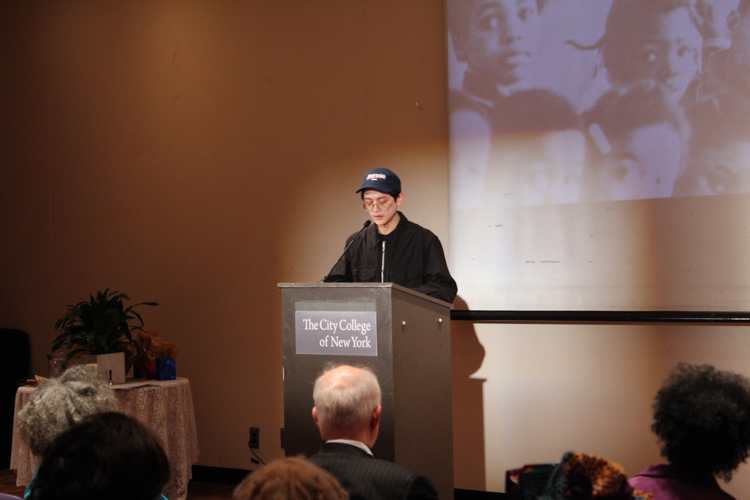
He apologized for notliving up to the standards of social justice that the generations before heldfor themselves and for the increasing racial disparity in public, specialized,and higher education. He promised to continue the legacy of Chavez, reciting aquote by Salvador Allende, former president of Chile, which read “To be youngand not a revolutionary is a biological contradiction.”
April 18: Remembrance Rock
The last day of the events took place on April 18. Friends of the Committee, alumni, former and current faculty and staff walked together from NAC to Remembrance Rock in South Campus. Many speakers from the day before returned to give remarks. On the way, students and faculty joined the walk, some curious about what was going on and some recognizing old friends and colleagues.
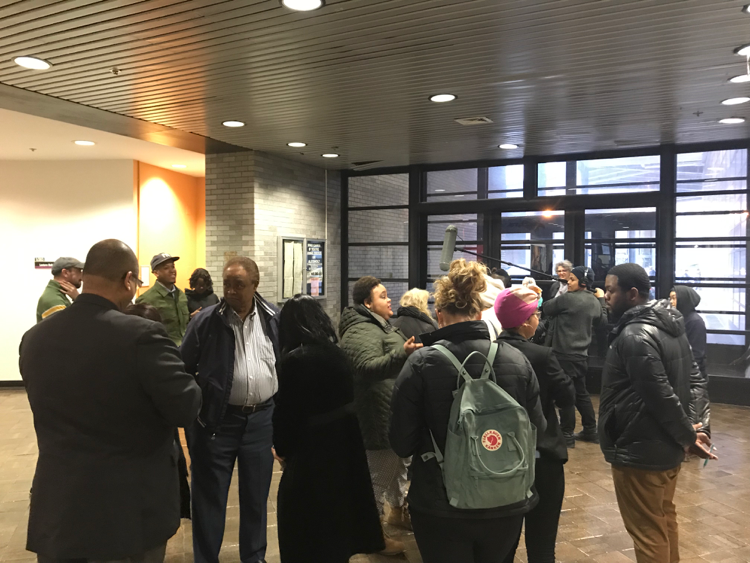
The speakers at thewalk clearly felt more at liberty to speak their minds about the state ofhigher education. Before the speeches began, the audience was led in acall-and-response protest chant: THEY SAY GET BACK – WE SAY FIGHT BACK, GETBACK – FIGHT BACK.
A plaque was erectedin 1999 to commemorate the events of 1969 that led to City College’s dedicationto open admissions. The irony did not go unnoticed by the speakers and participantsof the march. They urged students not to be discouraged by setbacks, butinvigorated.
“First of all, wedidn’t call it a protest. When we took this place, we named it Harlem Universityand we called it a reclaiming,” James Small clarified for the intimate group.
A 1969 Takeoverparticipant and an imam at the historic Mosque No. 7 in the 1960s, Small wasassigned by mosque leaders to help the Committee of Ten execute theirreclamation. He was moved to see his peers the day before, strong and continuouslyfighting, after so many years.
He acknowledged thatsegregation in New York is almost as bad as it was in the 50s. He pointed toour neighborhoods and disparity in higher education, specifically thedifferences in what different racial groups study in college. Learning aboutour history, he says, can erase the mystery of why we are so divided. “Racism,as subtle as it is, is as gross here as it was in Mississippi in the 1940s,”Small said.
Small identifiedpoverty as a central issue, not only during the Takeover but at the root ofevery social struggle. The Committee and those who participated advocated forthe entrance of poor white students into CCNY. He said that poor people aredriven to poverty, and do not have sustainable methods of securing food orhousing because of their lack of access to education. “You have to fight at thelevel where people get trained to produce the kind of skills necessary toprovide food clothing and shelter for themselves and their families,” Smallsaid.
Small made sure tomake a distinction between redistribution and assimilation to capitalism. Hereminded the students that the Takeover’s purpose was to make collegeaccessible for people who did not have money. “That has to be part of themessage: we didn’t come here to join oppression and the oppressors; we camehere to go back and liberate those who are being oppressed,” he said.
Small admitted thatthe introduction of tuition at CUNY took the struggle right back to where ithad started. Regardless, he reminded the youth to stay undeterred and to “fightfor the least of us.”
Small emphasized theimportance of “remembering,” or the act of placing past struggles and leadersin the context of the present to create a better future.
The next speaker wasMcGuire, who apologized for taking up space alongside some of the originalCommittee of Ten and other dedicated students, staff, and faculty of color.Essentially, his role consisted of taking orders from the “heroic” black andbrown student leaders.
“I’m here to commemorate,not to celebrate,” McGuire said, reminiscing on an Afrocentric City Collegeduring the 70s and 80s filled to the brim with students of color, complete witha progressive Child Development Center. McGuire shed light on the fact thatevery demand made by the Committee of Ten has been scaled back or completelyreversed by City College. He said the assertion that CCNY has a diverse campusneeds to be challenged by students, faculty, and staff who are genuinelyinterested in making radical change at CUNY, as it is less diverse than it wasthirty years ago.
Over 40% of thestudent body was black after the Takeover, and CCNY’s Black Studies departmentwas the largest in the nation. Now, black students comprise 18% of the studentbody. McGuire acknowledged the statistic as the biggest drop of a Black studentbody in any of CUNY’s senior colleges. He pointed out that the Black Studiesdepartment is now a program.
After the abolishmentof remediation and the Black studies department, many black and brown facultyand staff were “purged” from CCNY.
McGuire pointed outSmall, who was fired from his position as director of Finley Student Center.Powell, an adjunct professor at the time, was another victim of the firings.Wendy Thornton, interim vice president of Student Affairs, was able to keep theChildcare Development Center alive amidst firings until 2015, when it wasclosed for renovation. “There are going to be people...who are going to betelling you about all the great things that were won in 1969. You gotta knowabout all the things that were lost in the 1990s,” McGuire said.
McGuire pushed againstthe Free Speech Policy put forth by President Vince Bordereau last year thatallows faculty moderation and video recording of “controversial” campusevents. “In 1962, the NAACP fought thecase in the US Supreme Court to say that the state of Alabama could not compelthe NAACP to give up its membership list...this free speech policy isunconstitutional,” McGuire said.
“The courts are not onyour side. These people did not sue to get open admissions.” McGuire said.“What’s going to make change is you all.”
As Esperanza Martellwas introduced, McGuire cheered and said, “She lost her job here!”
A former CCNYprofessor and mentor Martell was a 23-year old non-matriculated student duringthe 1969 Takeover. As a Harlem community leader, she took the opportunity toacknowledge those who do the groundwork of social change without anyrecognition. “We remember leaders, but we don’t remember people who were behindthe leaders. We don’t remember how leaders are created. The strike did not comeout of thin air like people say,” Martell said.
She recognized thosewho were not publicly lauded for their efforts and were often the backbones ofthe movement to get black and brown students into college. It was not onlystudents, but parents, families, and community members. Martell said thosepeople, many of them from nearby Manhattanville Projects, were the onessupporting, feeding, and motivating the participants of the 1969 Takeover as itplayed out. Why are these vanguards of change pushed to the foreground? Martellsaid, "Ultimately, because they’re women, and they’re poor working classwomen.”
She dropped names suchas Maria Ortiz, who was behind the name of P.S. 161 Pedro Albizu CamposElementary School, and Janet Carlson of the Harlem Joint Schools Committee.Martell pointed out the organizing going on at that time made the 1969 Takeoverpossible. “We cannot forget that we’re linked. When people talk about theenslaved Africans, I always say the only reason I’m alive today is because theyhad a dream and they organized,” She said.
As a Puerto Ricanwoman, Martell asserted that her people are constantly being erased from thehistory of black and brown liberation. She mentioned Evelina Antonetty, thefounder of United Bronx Parents, and Antonia Pantja, founder of ASPIRA, aswomen who made it possible for Puerto Rican students to attend City College.“The educators that were in the streets of our community: they are why I amhere today speaking to you. That is the only reason that I’ve had anopportunity. And understand that I graduated from Julia Richmond High Schoolwith a fifth grade reading level. Not material for college, but the street taughtme how to read and write,” Martell said.
In the eyes ofMartell, community organizing inspires and supports university-level politics,not vice versa. She pointed out the whitewashing of social justice. “I’veworked with folks doing serious work, not at the University, but in ourcommunities. Without community activism, without the unions, without FightBack, there wouldn’t have been a Takeover," she said.
Martell encouragedstudents to wake up to the reality of the movement and consider where it willgo once they are gone. “We’ve won many battles, but we’ve lost the war. Wedidn’t think, ‘fifty years from now, what is this going to look like?’”
Hank Williams, alecturer at Lehman College and community activist, kept his remarks brief tomake time for the people he wanted to hear speak.
A 2002 CCNY alumni,Williams followed in the steps of his father, who graduated in 1952 aftercoming home disabled from World War II. His father relayed many of hisexperiences in college to Williams, specifically about the racism he dealtwith. “In a lot of the courses he was in, he remembered being told no Blackstudent - they didn’t use the word black - would ever get higher than a C,” hesaid.
This disturbing legacyat CCNY is one Williams urged the audience to consider. Williams was fired fromhis 12-year position as a CCNY SEEK counselor last year. He remembered afive-year stretch in which he could count the number of Black men in hisclasses “on one hand.” Quoting JohnHenrik Clarke, he said “The use of history is basically to orient you, toremind what has been done and what needs to be done.”
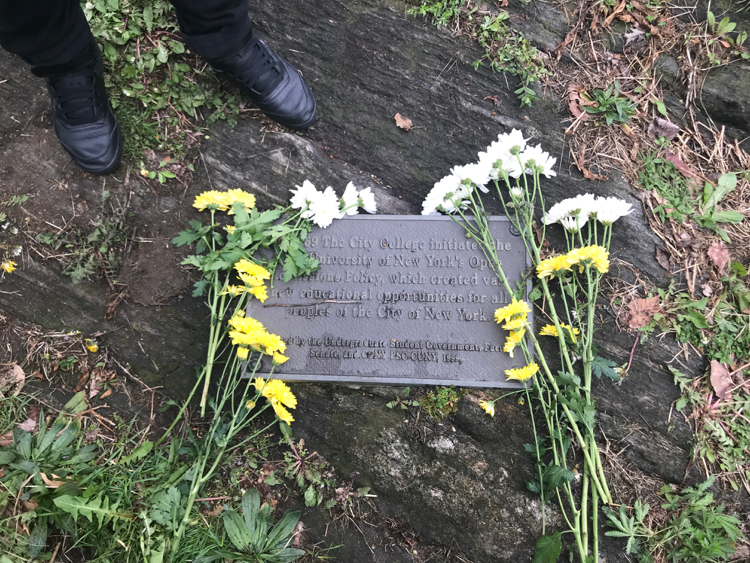
As a graduate of theCUNY Graduate Center, Williams testified to its highly segregated environmentand how it remained virtually untouched by the efforts of the communityorganizers back in the 60s. He said we have to “be honest” about what the 1969Takeover could not accomplish in its time. “They were able to keep the leversof power and just give us a little bit. That is a piece that still has not beenwon,” Williams said.
Inez Barron, Council member for the 42nd District of the New York CityCouncil and Chairperson for the Higher Education Committee of the New York CityCouncil, chose to run late for a council meeting in Brooklyn to attend thecommemoration.
AlthoughBarron was not a part of the 1969 Takeover, she said she was aware of theiractions and supportive of the movement. The students’ tireless efforts fromthen up until now made an enormous difference in the way this generationregards higher education. “I want to recognize all the speakers who went beforeme, because they were the ones who had their bodies here on the line. Theystayed on the battlefield. They stayed at the position that they had in termsof being able to bring the message to our people,” she said.
Barronsaid as a councilmember, she has called out CUNY on its failure to hireadequate numbers of black faculty to its colleges and has advocated for thereturn of a tuition-free city university. She invited the audience to come andspeak at a City Hall meeting on April 30, saying “I can fight the battle, but Ineed people behind me to feed me the information. If I don’t have theinformation, then I’m just going by what CUNY puts out and not what you knowyou have experienced.”
Shedescribed the insidious, quiet way power structures take away our rights inhopes that we won’t notice or forget. She urged the audience to confrontPresident Bordereau and the Board of Trustees about their grievances with CityCollege and to never doubt the power of the collective. With perseverance,persistence, dedication and arduous work, Barron says that we will be able toregain much of what was lost in the years between 1969 and now. “We have tocontinue to wage the battle for what we know we are entitled to. We have to reversethe trend,” Barron said.
Afterthe speakers, an open mic was held. Audience members and friends of speakerschimed in with stories of their own experience, how the Takeover affected them,and what they will do to ignite change. Students, alumni, professors, staff(working and fired) and other audience members provided their perspectives onthe fight for equality in higher education.
At theend of the Remembrance Rock visit, speakers, alumni and black studies facultylaid their flowers on the 1969 Takeover plaque.
Throughoutthe three-day commemoration, it was clear that the 1969 Takeover does not existin a vacuum of time. Student organizations like the YDSA and the “7k or Strike”rank-and-file campaign remind us of that continued momentum.
Thededication of The Committee of Ten and the students who spent two weeks oncampus sparked an atmosphere of revolution and passion for social justice thathas not stopped, despite frequent setbacks.





